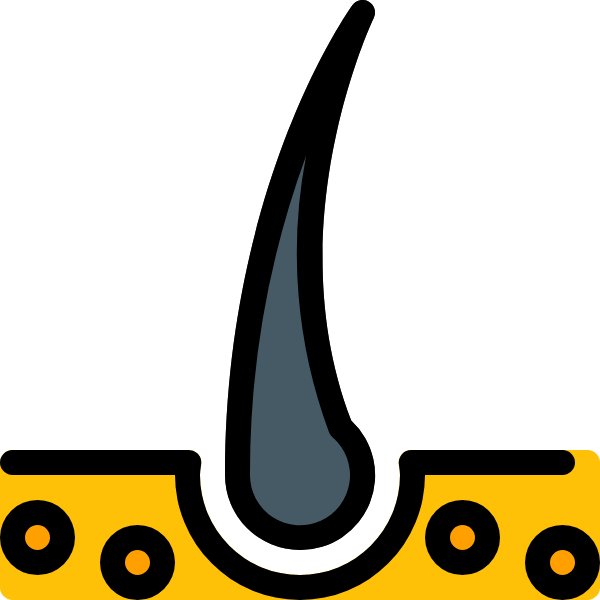Brushing hair is an essential part of our daily beauty routine. We use it to style and shape our locks, but could brushing actually be causing more harm than good? Recent studies suggest that there may be a link between excessive brushing and hair loss – so what’s the truth? In this article, we take a look at whether or not brushing your hair can cause baldness. We’ll cover the science behind it, as well as ways to keep your hair healthy while still enjoying a good brush every now and then. Read on for all you need to know about how brushing affects hair health!
The Science Behind Brushing And Hair Loss
Have you ever wondered if brushing your hair could cause it to fall out? It’s a legitimate concern, as too much of anything isn’t necessarily good for us. To answer this question, let’s look at the science behind why we might see increased hair loss from over-brushing.
It has been established that mechanical stress on the scalp can lead to traction alopecia, which is an excessive pulling or tensioning of hairs on the scalp leading to permanent damage and eventual baldness in some cases. This type of hair loss is most commonly seen when tight braids are worn for long periods of time or when extensions are used excessively; however, excessive brushing may also contribute to this condition by placing strain on already weakened follicles.
Hair shedding is natural and should not be confused with actual hair loss. However, excessive brushing can create breakage along the shaft, making strands appear shorter and thinner than before. In addition to causing breakage, overly aggressive brushing can strip away protective oils produced by our scalps resulting in dryness and increasing the likelihood of split ends forming – both of which make our locks more vulnerable to damage.
From these facts it’s clear that while regular brushing is important for managing tangles and maintaining healthy looking tresses, going overboard can have negative effects on our manes – especially those with fine textured strands. Moving forward then, let’s take a closer look at how best to brush our hair properly so as to minimize any potential harm caused by doing so.
How To Brush Hair Properly
Brushing your hair is an essential part of maintaining a healthy head of hair, however it can also be damaging if done incorrectly. It’s possible to cause breakage or even hair loss by brushing too aggressively or with the wrong tools. To ensure you’re getting the best out of your grooming routine and avoiding any unnecessary damage, here are some key tips for brushing correctly:
- Use a brush designed specifically for detangling wet hair; this will help prevent pulling and tugging on individual strands that could lead to breakage.
- Start at the ends of your hair and slowly work up towards the roots in sections; this ensures knots don’t have time to form as you go along.
- Brush gently but thoroughly – use slow strokes rather than vigorous scrubbing motions which can pull hairs from their follicles and potentially cause scalp irritation.
It’s important to remember that while proper brushing techniques can help reduce damage caused by styling, they won’t always be enough to keep your locks looking shiny and healthy. Here are some additional tips to avoid further stress being placed on already fragile strands…
Tips To Avoid Hair Loss From Brushing
“No pain, no gain” – this adage holds particularly true when it comes to hair care. While brushing your hair can certainly cause some temporary discomfort, it’s important to remember that proper brush maintenance is essential for healthy locks. With the right approach, you can avoid unnecessary hair loss from brushing and enjoy long-lasting results for your mane.
To start off on the right foot, always use a natural bristle brush or comb as these are gentler on your strands than synthetic brushes with plastic bristles which tend to snag in tangles more easily. Additionally, never brush wet hair as doing so will further damage fragile strands and could lead to breakage. Instead, wait until your tresses have dried before running a wide-toothed comb through them gently to remove any knots without tugging too hard at the roots of your hair follicles.
It also pays dividends to get into the habit of using heat protectants when blow drying or styling your mane with hot tools such as curling irons and straighteners. These products help shield delicate cuticles from extreme temperatures while adding an extra layer of protection against potential split ends and other forms of damage caused by excessive brushing over time. By taking preventive steps like these now, you can ensure that your luscious locks remain strong and vibrant in spite of all the daily brushing they endure!
Conclusion
Brushing hair is not the cause of increased hair loss. In fact, if done correctly and with care, it can actually improve scalp health. So don’t be afraid to brush your hair – just do it gently and use the right tools. It’s possible that you could experience some temporary shedding from brushing, but this is normal and doesn’t mean you are losing more than usual amounts of hair.
Some may argue that excessive brushing can still lead to hair damage or breakage, which in turn contributes to thinning or lost strands. However, as long as you take precautions like using a detangling spray beforehand, making sure your brushes have soft bristles that won’t tug at your strands too harshly, and avoiding tight hairstyles where possible, then there’s no need to worry about experiencing any unwanted effects on your mane due to brushing.

